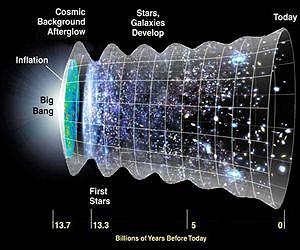Topics: Commentary, Diversity, Humor, Science Fiction, Star Trek, Women in Science
I finally used my Fire Stick - post the Kodi "jail break" for watching some well-deserved (and on-demand) escapist TV, especially appreciated while doing graduate school.
I'm glad the producers ignored the misogynist/racist rabid puppies/sad puppies/pound puppies (my add) with regards to a female Captain Philippa Georgiou, played by Michelle Yeoh and a female first officer that's the main focus of the series - Michael Burnham, played by Sonequa Martin-Green. I guess the need-of-neutering crowd missed all those female admirals in TNG, DS9 as well as Captain Katherine Janeway that probably rose up the ranks on their command and management skills* as well as knowing a few things theoretical and practical about their respective (fictional) warp cores. It's annoying that as a person of color, I cannot see or watch a science fiction (the operative word is "fiction") without commentary when the genre has been diversified and some get their panties in a wad. It's as if we're invisible and not credible (at least in their mindsets) in technical realms. Also note Thor: Ragnarök - Tessa Thompson; NK Jemisin (Google rabid puppies/sad puppies - they're a hoot!). Klingons: uglier. Some have compared them to fans of our current POTUS (for however long that, or the species lasts). I'm not sure about the 24 houses thing, but I'm a little concerned in a hundred years, we're supposed to get Worf out of these guys! They remarkably improve their looks, apparently. Vulcans: snootier. I mean we got they didn't like Sarek, his human wife Amanda (Pon Farr, dude?) and his half breed son Spock, but they threw a sister in the mix of an already unique family to reveal other than Sarek, Vulcans are xenophobic pricks! And isn't "logic extremist" an oxymoron? We're a far cry from T'Pring, Stan and the whole Pon Farr ritual mating, as in this reboot time line, Spock gave the middle finger to the Vulcan Science Academy and apparently has a ("it's complicated") thing with Uhura. Humans: PTSD. That was a shocker, since Roddenberry left us with the impression science cured everything from the common cold to world hunger. Although, Captain Lorca sauntering about with a phaser in his back hip to his door is probably NOT a good look! (If he has an accident, you KNOW someone's going to post it on Galactic Facebook.) With the reintroduction of Harry Mudd, they obviously didn't eliminate money either, else the character has no motivation to be a smuggler and all-around jerk. The Trek series are always influenced by the time periods the respective series are produced in. In the 1960s you had miniskirts, The Cold War (that's lately gotten chummy, picking our president for us and all); Sean Connery's James Bond, so William Shatner's James T. Kirk had to be his space cowboy equivalent (with the exception of green alien women). Worf on board the Enterprise and the United Federation of Planets' allegiance to the Klingon empire preceded the Berlin Wall coming down by four television years. TNG discovered quite late in the maturity of the series that Jean Luc Picard - a faux Frenchman who rarely spoke French, drank Earl Grey and said English colloquialisms like "shed-yule" - might have sex once in a while (can't let William T. Riker have all the fun). Avery Brooks as Benjamin Sisko on Deep Space Nine was during both terms of the Bill Clinton presidency (per Nobel laureate Toni Morrison, our "first black president" before we actually had one). Captain Janeway led Voyager through the Delta quadrant between an infamous blue dress and hanging chads with three powerful women that seemed clones of Hillary Clinton: Janeway, B'Elanna Torres (half Klingon) and former Borg 7 of 9. Enterprise brought up the rear with a short series that matched our shortened attention spans post 9/11, plus the future was here and our infatuation with it waned as we worried about explosive shoes and dwindling civil liberties in the War on Terror. This new series has an openly gay couple - a scientist, Lt. Stamets - played by Anthony Rapp - responsible for "spore drive" (using a macro-ripper, souped up five-dimensional tardigrade, because speeds > c on fungal power is so plausible) and the ship's doctor played by Wilson Cruz, something that would have gotten Roddenberry and company canceled in a fortnight (Exhibit A: the kiss between Kirk and Uhura wasn't broadcast in southern markets for years). Times have truly changed. Tongue-in-cheek commentary: I'm taking umbrage with the openers for TOS and TNG:
(TOS) Space: the final frontier. These are the voyages of the starship Enterprise. Its five-year mission: to explore strange new worlds, to seek out new life and new civilizations, to boldly go where no man has gone before.
(TNG) Space: the final frontier. These are the voyages of the starship Enterprise. Its continuing mission: to explore strange new worlds, to seek out new life and new civilizations, to boldly go where no one has gone before.
Sounds regal...noble, almost altruistic. I'm here to say it's pure hokum and futuristic political posturing. I'll explain.
Remember the growth formula?
N = N0ert, where N0 = initial number, r = 0.02 (for humans) and t = time.
As of 2017, we're roughly 7.6 billion people on the planet.
The fictional World War III on the Trek time line takes place in 2026 (eek) to 2053, shaving off 37 million souls - a lot, but assuming this subtraction is calculated AFTER the fictional war (27 years duration): 2026 - 2017 = 9 years, so that increases us to 9,098,851,960 at the beginning.
9,098,851,960*e0.02*27 - 37,000,000 = 1.55766924 x 1010, or 15.6 BILLION people, presumably after nuclear war, nuclear winter, eugenics, famine, drugs, etc before "first contact" with what we'd soon discover as Vulcan snobbery.
To get to Kirk's time 110 years later: 1.55766924 x 1010*e0.02*110 = 1.405798592 x 1011, or 140.6 BILLION people. I leave it to you to calculate the 24th century's burst at the seams. All it requires is a calculator with a "ln" (natural logarithm) function key. ex is usually the second function key option, or close by. It also requires places for all these people, who are being "fruitful and multiplying" to go, and a means to get there for cities, schools, industry, potable water, food, video games and procreation.
See how our future descendants' motivations might be a little less than altruistic?
You just might need force fields, phasers and photon torpedoes as you "boldy go" and "explore" real estate in somebody else's parsec. Humans - gotta love us - can get downright pushy when we colonize anything!
We've also got a history where that didn't work out well for the natives encountered.
And other sentient beings - Klingons, Vulcans, Romulans, Borg, et al despite space being the "final frontier" and a lot of it, might they consider our encroachment - and our prodigious human reproductive powers - at sub light (most likely) or warp speed - rude?
It boils down to the admitted grit and tensions designed in Star Trek: Discovery are simply the same we're experiencing over resources and politics on Terra Firma. It is the Trek for these times, and the most realistic thing about the fantasy franchise.
Thanksgiving next week. Blog vegging till the 27th. "Dif-tor heh smusma." \\//_Related links:
[Article] – Star Trek: Discovery – The Sci-Fi We Need Right Now, Ronita Mohan, Film Debate, UK
Den of Geek: Star Trek: A History of Female Starfleet Captains on TV
Internet Movie Database - To "Boldly Go": The Women of Star Trek
*Memory Alpha:
Admiral Kat Cornwell
Captain (promoted to Admiral) Kathryn Janeway
Admiral Alynna Nechayev
Admiral T'Lara
Star Trek dot com's interactive database - you'll catch up quick.
![]()





